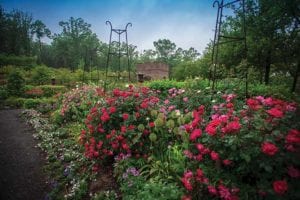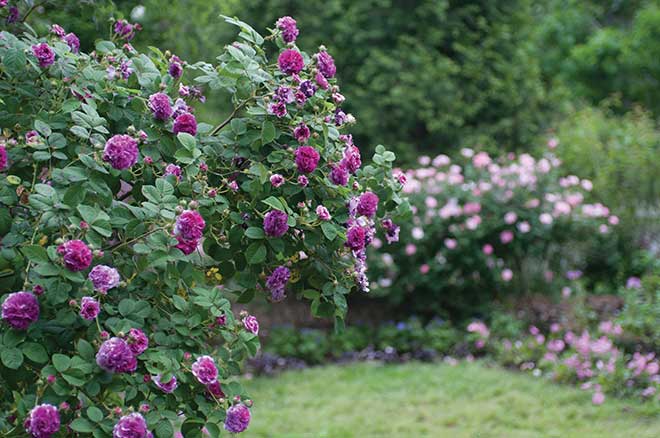
I’m a rose fanatic and have planted them extensively in my garden. My love of them began when I lived in England during my graduate work. I became fast friends with Lady Elizabeth Ashbrook, who was crazy about roses and had them all around her estate in Cheshire.
So when I came home, I started planting them at my house in downtown Little Rock. I now have a 2-acre rose garden at Moss Mountain Farm dedicated to my friend, who taught me so much about these charming flowers.
The peak of rose bloom in my garden occurs around the last week of April. I consider this an unofficial farewell to spring and the beginning of summer. I say goodbye to dogwoods and tulips and hello to daylilies, hydrangeas and of course, more roses. With the exception of one or two varieties, the roses in my garden are repeat bloomers and will continue to throw out flowers until the first hard freeze in fall. While most of the varieties are fairly carefree, I have a summer regimen to keep them in tip-top shape.
feeding
I add a healthy dose of fertilizer in the early spring to fortify them for their first flush of bloom. I simply use a fertilizer high in phosphorous, which is the middle number on the package. After the first wave of flowers fade, I hit them with a second application formulated especially for roses. This will re-energize the plants and promote more roses for the repeat bloomers. Through the summer, I continue to feed them after each bloom cycle.
black spot & powdery mildew
These are the biggest headaches when growing roses. As the name implies, black spot starts with a black spot on the leaf. It’s a fungus that diminishes the look of the plant. I’ve never had a rose bush die from black spot, but it cuts down on their performance and makes the shrubs look pretty shabby.
Black spot is a fungus usually brought on by weather conditions: sporadic rain followed by humid to hot conditions. The rain soaks the plant, then the weather heats up and causes the fungus to form on damp leaves and petals.
If the problem becomes severe, use a commercial fungicide for black spot and always try to get the plant completely saturated from top to bottom. Some serious cases of black spot require several treatments before the fungus is completely annihilated. You should also spray the ground around your roses and put any diseased leaves in your trash, not in your compost.
Powdery mildew is another fungus, revealing itself as a powder-like coating over the leaves. A heavy infestation can cause leaf loss and diminish vigor and flowering. If you have this problem, there are two approaches to try. The first is prevention: remove and dispose of infected plants and leaves by burning them or putting them in the trash. Do not compost them. The second line of defense is spraying, but before using conventional fungicides, try the safer alternatives. I use a sulfur-based product. Spray roses about every seven to 10 days.
deadheading
The time to hard prune roses is late winter or early spring before the leaf buds open. If you didn’t cut them back this year, don’t worry. Once the blooms fade at the end of spring, do some light pruning to reshape them. Not all roses re-bloom, but for those that do, removing what is left of dead flowers definitely encourages the next wave of bloom. Do this by removing blooms with sharp pruners, making the cut just above a leaf with five leaflets. That encourages new buds to form and stems to be large and strong. After I’ve pruned, I feed roses with a high-phosphorus liquid fertilizer.
Photo: Kelly Quinn
P. Allen Smith is an author, conservationist, and TV host of Garden Home on PBS and Garden Style (check your local listings). He uses his Arkansas home, Moss Mountain Farm, to promote the local food movement, organic gardening and the preservation of heritage poultry. For tours of the farm, visit pallensmith.com/tours.
